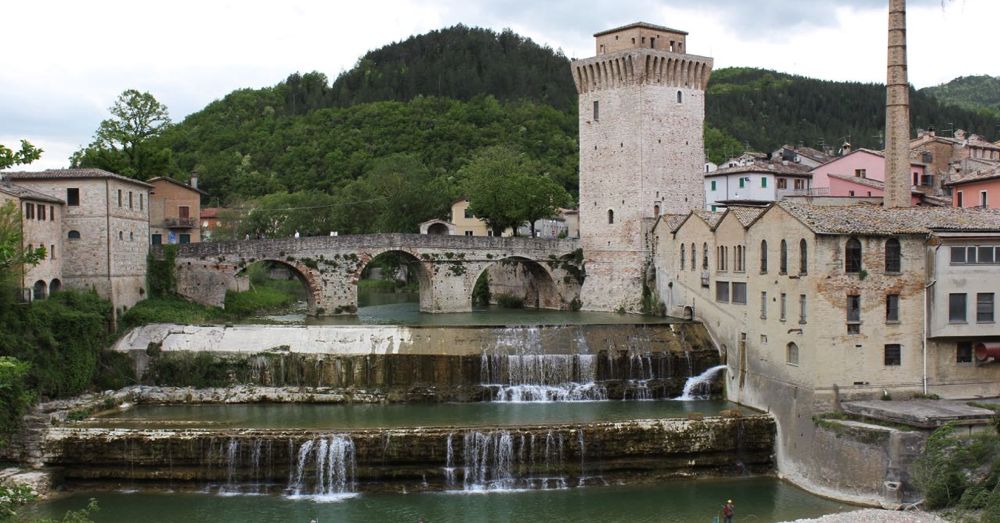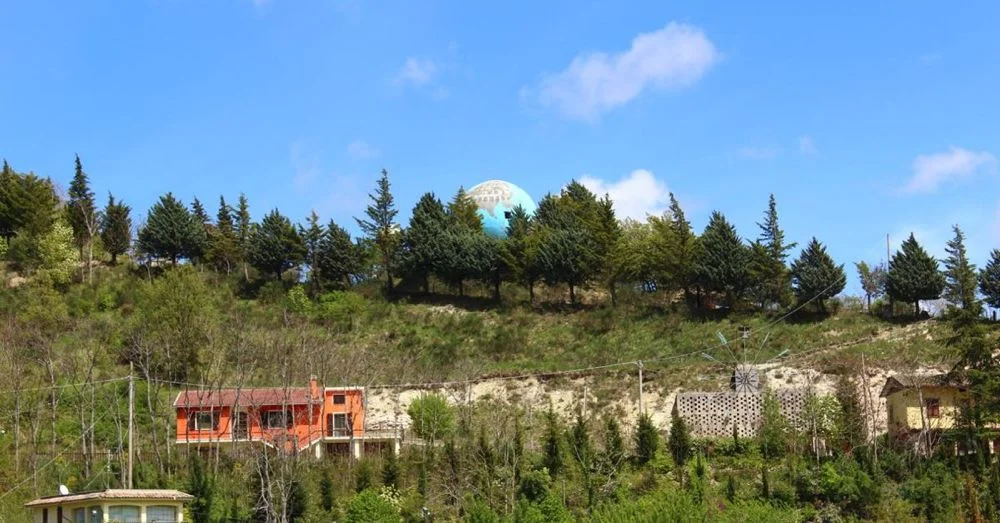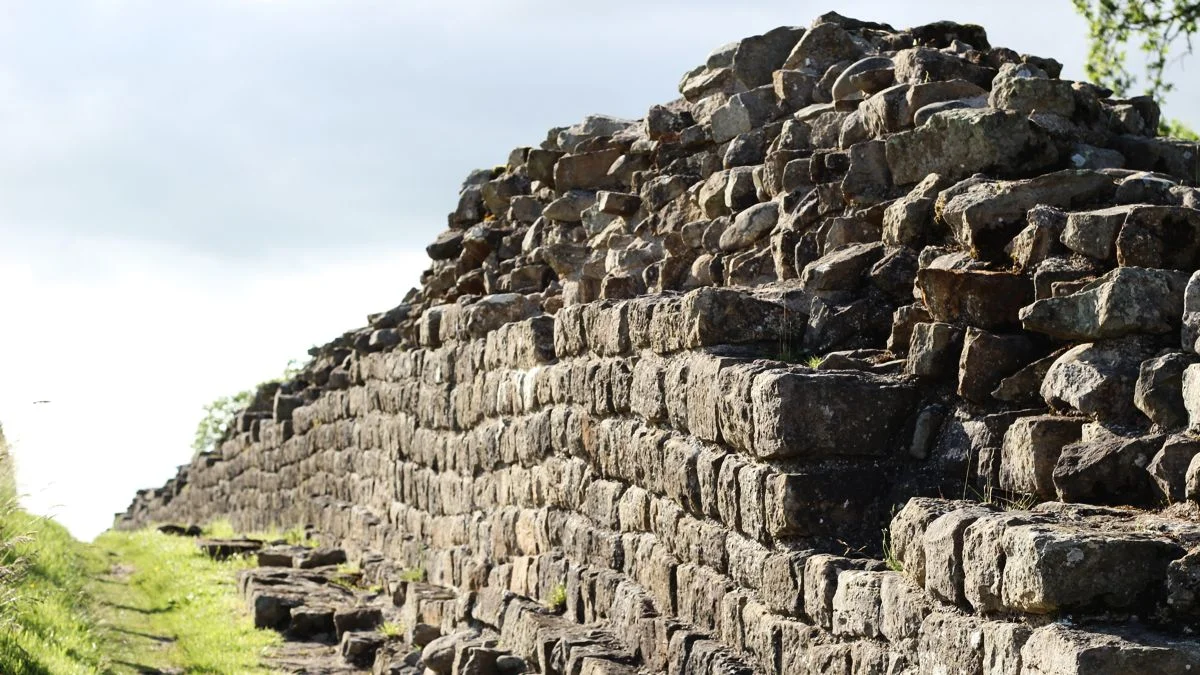(That's Pronounced "Le Mark")
Holiday Weekend in the Italian Country
On Thursday, 28 April, we picked up our car from Peugeot at the Roma airport and drove from Rome to La Tavola Marche, an organic farm, inn, and cooking school that's run very smoothly by an American couple, Ashley and Jason Bartner in Italy’s Le Marche region.
We’d first heard about La Tavola from our friends Charly & Martin way back when we were in Ubud, Bali. They made it sound like a delightful place to spend some time, and we were very much looking forward to our visit.
Getting to the place was a little challenging. The roads in this area are twisting ribbons of asphalt and for a good portion of the drive we were behind a large truck, so the going was slow. Somehow we got on the wrong road and came in to La Tavola from the back.
There were signs along the road warning of deer in the area, and at one point a deer actually jumped out in front of our car. Fortunately, the roads didn’t allow for high speeds and the deer allowed us plenty of room to stop.
This must be the place.
The drive was pretty much an all-day affair. We left Rome by 2:00 p.m. and arrived at La Tavola and got settled in to your room just before dinner. Jason is a professional chef who trained at the French Culinary Institute in New York, so what a dinner it was! We only had the “small” dinner, but it was a lot of food.
The next day, (Friday, 1 May) we had planned on doing a tour of the local open-air market, but, as it was Labor Day in Italy (and International Workers’ Day throughout Europe), the market wasn’t taking place. So instead, we decided to take the 45-minute drive in to the walled city of Urbino to check out what some people call “a city with a fairy tale castle.”
Urbino
The town of Urbino is a UNESCO World Heritage Site (Historic City Center of Urbino), primarily for its large contributions to Renaissance culture which were adopted and emulated throughout much of Europe.
Ducal Palace at Urbino.
The town is most recognizable for the large ducal palace that dominates the city (this is what people mean by the fairy-tale castle). It looms so large against the rest of the city, you can actually see it sitting high on its sloping hill from many kilometers away.
Urbino, complete with fairy tale castle, in the distance.
We didn’t go inside to tour the the palace, but we did learn a lot about the man behind it, Federico da Montefeltro, the Duke of Urbino during the mid to late 1400s. The Duke was a key player in the Italian Renaissance and made Urbino a center of education and creativity.
He had the largest library outside of the Vatican and was a great patron of the arts, all key reasons why he was known, at least for a time, as the Light of Italy. He was a fascinating character who fought a lot of battles (they say he never lost), but he never fought for free. If you wanted his support, you had to pay.
Streets of Urbino
We spent a few hours strolling around the small and charming town. We were surprised to find a few shops and restaurants were open at least for a few hours during the holiday. The town was bustling with people — some were tourists, but most were students from the University of Urbino (founded in 1506 and still operates today) relaxing and picnicking on the day off.
After an early dinner in Urbino, we started to drive back to La Tavola. We took the scenic route (well, it’s all pretty scenic around here), stopping briefly at the even smaller town of Fermignano to see the Roman bridge over the Metauro River and its accompanying medieval tower. When we there there, a group of fishermen were plying their trade at the base of the tiered waterfalls.
Roman bridge and medieval tower at Fermignano.
Exploring Le Marche
The next morning after breakfast we hiked up a nearby hill to take in the panoramic view of the surrounding area. At the top of the hill, which is actually part of Umbria (a settlement from the results of an old battle — the Lombary Wars, I think) there are some old stone ruins from a bygone era. You can see these on the hill from the road below, but it was cool to be able to see them up close.
Hilltop ruins.
On the way up the trail, we saw a pair of mating snails and we scared up a deer that went bounding across the fields into the safety of the nearby forest. At the top, in addition to seeing the ruins, we got great views of the entire rolling countryside, including La Tavola Marche, directly below us.
La Tavola Marche from the Umbrian hilltop.
We’d heard about the Chiesa dei Morti (the Church of the Dead), which was a short distance away in the small town of Urbania. This place has 18 mummies on display which were at one time buried in the church’s cemetery.
When the cemetery had to be moved (for health reasons under decree of Emperor Napoleon) in 1804, it was discovered that these bodies had been preserved. They’ve been on display in this church since 1833. It sounded fascinating, so we went to Urbania to check it out, but, alas, it was closed (as was most of the rest of Urbania).
Outside Chiesa Dei Morti
The sign on the door said it would be open the next day (Sunday), which would be our last in Le Marche, so we planned on stopping by before leaving the region behind.
We’d also read about a giant wooden globe, supposedly the largest in the world, in the nearby town of Colombara. So we drove over there to see if we could find it.
We did find it, and we drove all the way up the hillside of the small Italian town, but the gates up to the globe were locked. Yes, it too, was closed. But we were able to see the globe pretty well from the road and we learned that it was called Mappamondo.
Mappamondo: Giant globe on a hill.
The nearby Amarcord Brewery was closed as well, so after striking out on interesting things to do in the area, we drove back to La Tavola and got ready for our cooking class.
Italian Cooking Class
That night, we took a family cooking class from Jason. Under his tutelage, we created a multi-course meal with a spring bean salad; pan-roasted vegetables; our very own handmade cavatelli pasta with fava beans and asparagus in a hand-crafted sauce; braised bone-in capacolla with potatoes, tomatoes, and wine; and even panna cotta with strawberries for dessert.
It was a great class. We had a fantastic time, and we learned a lot about cooking, including the all-important FASSA (fat, acid, sweet, salt, aromatic), critical knife skills, the oft-overlooked mouth-feel, how to make pasta (by hand), the right way to cook pasta, the easiest way to cut up a pepper, and a brief primer on proper olive oils and balsamics.
Dinner is served!
We started the class at 5:00 p.m. and weren’t done until almost 10:00 p.m. When it was over we got to eat what we had made. As Jason said, “Someone has to eat all this food.” At the night’s end we were stuffed and happy and we slept well.

Tom Fassbender is a writer of things with a strong adventurous streak. He also drinks coffee.
































